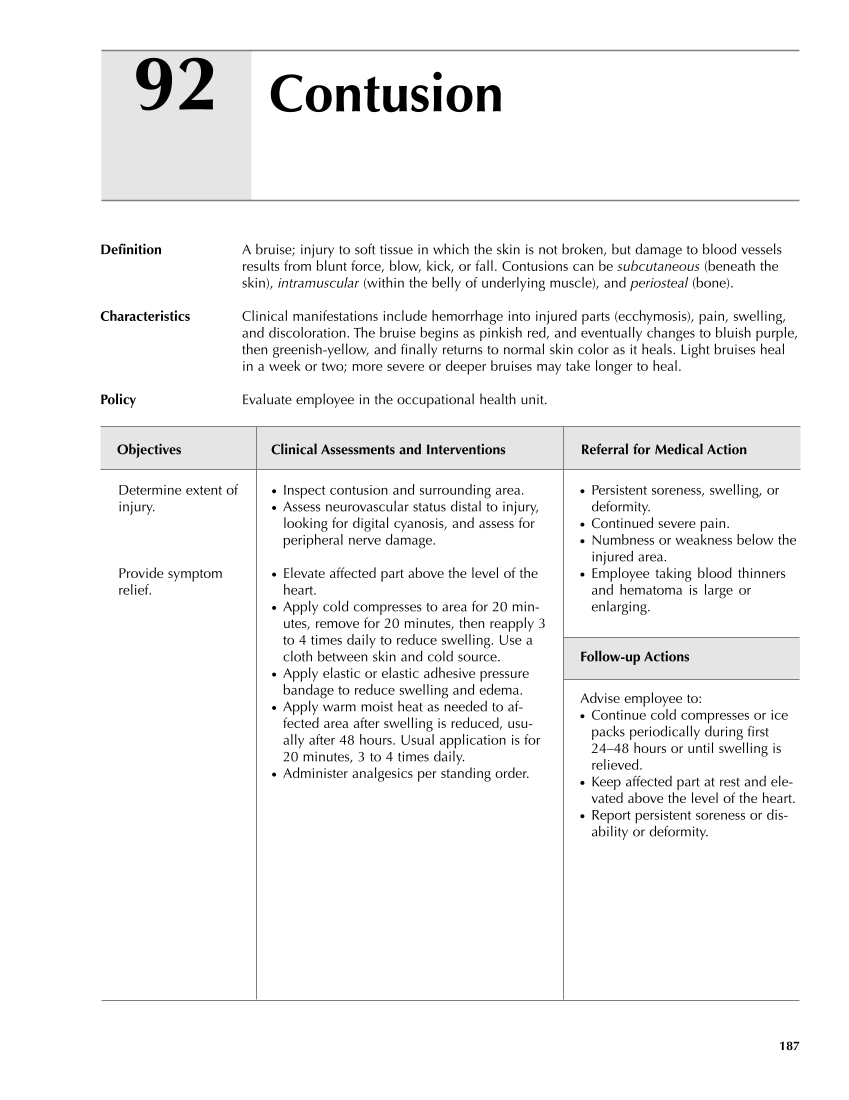● Persistent soreness, swelling, or deformity. ● Continued severe pain. ● Numbness or weakness below the injured area. ● Employee taking blood thinners and hematoma is large or enlarging. Follow-up Actions Advise employee to: ● Continue cold compresses or ice packs periodically during first 24–48 hours or until swelling is relieved. ● Keep affected part at rest and ele- vated above the level of the heart. ● Report persistent soreness or dis- ability or deformity. Determine extent of injury. Provide symptom relief. ● Inspect contusion and surrounding area. ● Assess neurovascular status distal to injury, looking for digital cyanosis, and assess for peripheral nerve damage. ● Elevate affected part above the level of the heart. ● Apply cold compresses to area for 20 min- utes, remove for 20 minutes, then reapply 3 to 4 times daily to reduce swelling. Use a cloth between skin and cold source. ● Apply elastic or elastic adhesive pressure bandage to reduce swelling and edema. ● Apply warm moist heat as needed to af- fected area after swelling is reduced, usu- ally after 48 hours. Usual application is for 20 minutes, 3 to 4 times daily. ● Administer analgesics per standing order. 187 Contusion 92 Definition A bruise injury to soft tissue in which the skin is not broken, but damage to blood vessels results from blunt force, blow, kick, or fall. Contusions can be subcutaneous (beneath the skin), intramuscular (within the belly of underlying muscle), and periosteal (bone). Characteristics Clinical manifestations include hemorrhage into injured parts (ecchymosis), pain, swelling, and discoloration. The bruise begins as pinkish red, and eventually changes to bluish purple, then greenish-yellow, and finally returns to normal skin color as it heals. Light bruises heal in a week or two more severe or deeper bruises may take longer to heal. Policy Evaluate employee in the occupational health unit. Objectives Clinical Assessments and Interventions Referral for Medical Action Guideline continues on next page
Purchased from OEM Press by (ge corporate access). (C) 2013 OEM Health Information, Inc. All rights reserved.












































































































































































































































































































































































































































